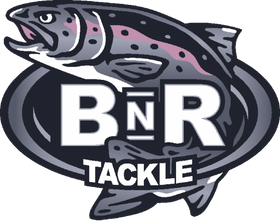Coho runs in the Pacific Northwest are strongest from the mid-Oregon coast north all the way to northern Alaska.

The run timings often overlap with Chinook and early winter steelhead, in many rivers it is common to be able to catch two or three different species in a given day. It is safe to assume that all healthy coastal river systems and many of the Columbia River tributaries all have coho runs to some extent. The growing strength of wild coho runs on the Oregon coast is a great success story of forward-thinking watershed management and examples of giving the fish a chance to come back. Coho spend a relatively short time in the ocean and the strength of their runs can be a leading indicator of good or bad ocean conditions.
Coho can be a very frustrating fish under warmer, lower water conditions that we often see early in the season around August and September.
Many rivers will have robust coho runs come into the river, be active biters for a period of time as short as 24 hours and then turn off. Under these conditions, biters can be coaxed through small, subtle presentations. Meanwhile, while the fish are not biting, they also make themselves very visible by constantly rolling or jumping. As you can imagine this behavior of being highly visible but non-cooperative biters can lead to frustration and unethical tactics. In comparison to coho that enter the river in cooler, higher water conditions, the behavior can be quite different. Later season coho can be some of the most aggressive biting fish, being willing to bite several baits, flies, or lures.
Twitching jigs for coho is probably the most common technique employed for coho in this region.
This technique has exploded in popularity over the last 10-15 years after being a well-kept secret for many years. There are as many types of twitching jigs as there are twitching jig rhythms. Some anglers prefer a high fast twitching in which the jig jumps 2’-3’ every twitch and some anglers prefer a smaller more relaxed twitch with the jig only jumping 1’- 2’ per twitch. Each technique has its preference with the fish on a given day. The most important part of twitching in our perspective is that the jig is allowed to fall freely in the water column after the upward swing of the twitching motion. The fall is most commonly when the fish bites and this free fall seems to be the trigger. Preferred colors are dark colors with high contrast-colored heads in green to dark green water (Queen, Full Moon, Purple Rain) and more subtle head colors in clearer water (Purple/Black, Hawk, Full Moon). Coho are notorious for residing around log jams and slow back eddies which can be very effective locations to fish twitching jigs.
Fishing beads for coho is more applicable to specific water conditions, more applicable in moving water conditions that are 3 to 8’ deep and moving at slightly slower than walking speed and faster. Similar to the twitching scenario, lower, warm water conditions can be difficult to get coho to bite in after the first 24 hours or so from the saltwater. In these higher, cooler water conditions the bead presents as a brightly colored, high visible bait which can be very effective for coho. Bead sizes for the applications range from 16 to 25mm, with a #1/0 to #3/0 hook and 15 to 20lb leader. For water on the slower side, we recommend fishing the bead suspended under a float while for swifter water conditions bobber doggin or drift fishing is preferred. Coho are susceptible to a lot of the same colors that Chinook like Sweet Pink Cherry, Mottled Red, Clown, Cerise, Joker and Hot Snot all will produce for coho.

In conclusion, coho can be one of the most willing biters under higher, cooler water conditions. Twitching jigs are very effective and can be fished in slower, woody holes as well and more traditional drift fishing sections of rivers. Beads are more effective in runs and drifts that are around walking speed current.


